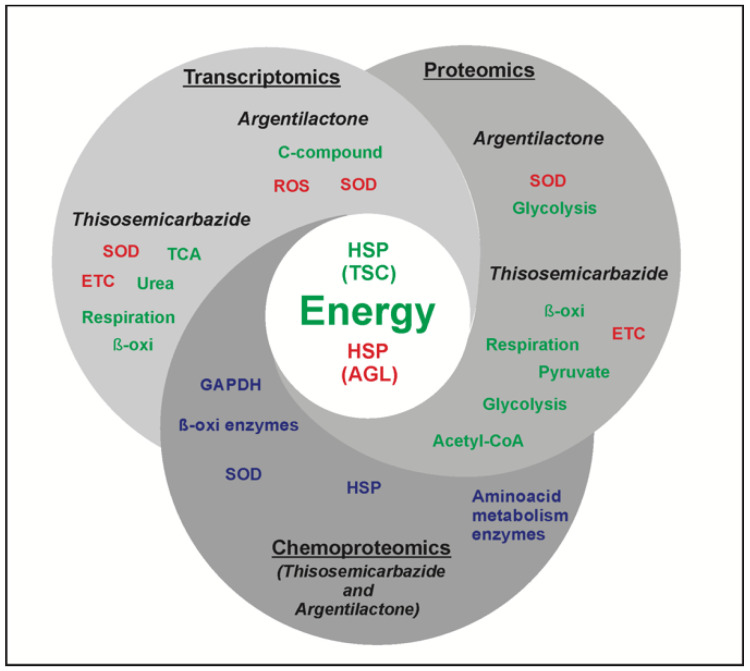Figure 3.
Modes of action of argentilactone and camphene thiosemicarbazide in Paracoccidioides. The diagram shows the two natural compounds that have been tested in Paracoccidioides cells according to three different ohmic approaches (proteomics, transcriptomics, and chemoproteomics). The central circle shows the common ways both compounds act in the pathogen; both restrict the ability of cells to produce energy through several pathways and, regarding stress conditions, the difference is that while thiosemicarbazide leads to a reduced HSP levels, argentilactone acts in such a way that protein/gene levels are increased. The green color indicates downregulation and the red color indicates upregulation. SOD—superoxide dismutase; ROS—reactive oxygen species; TCA—tricarboxylic acid; ETC—electron transport chain; GAPDH—glyceraldehyde-3-phosphate dehydrogenase.

